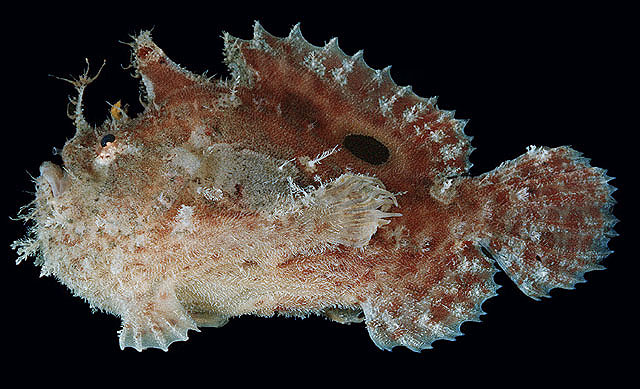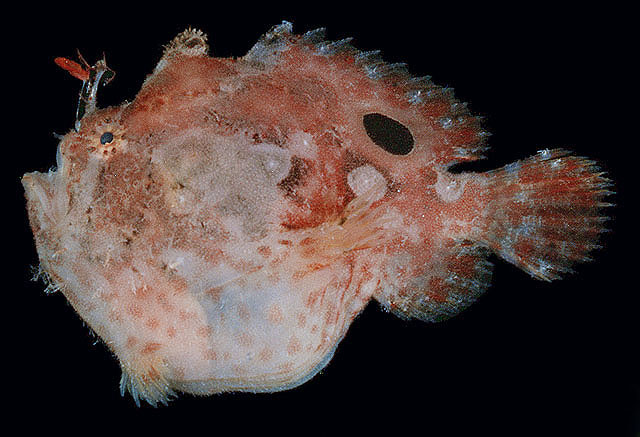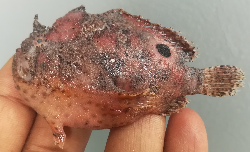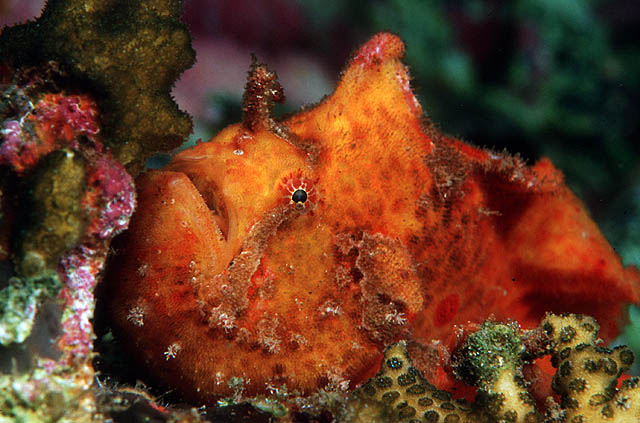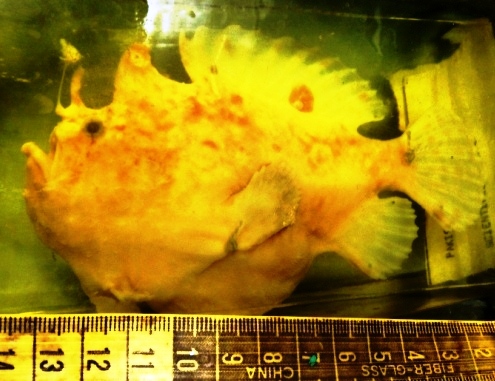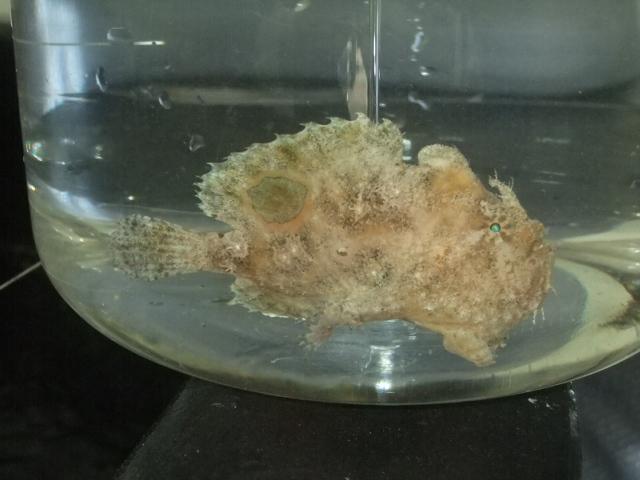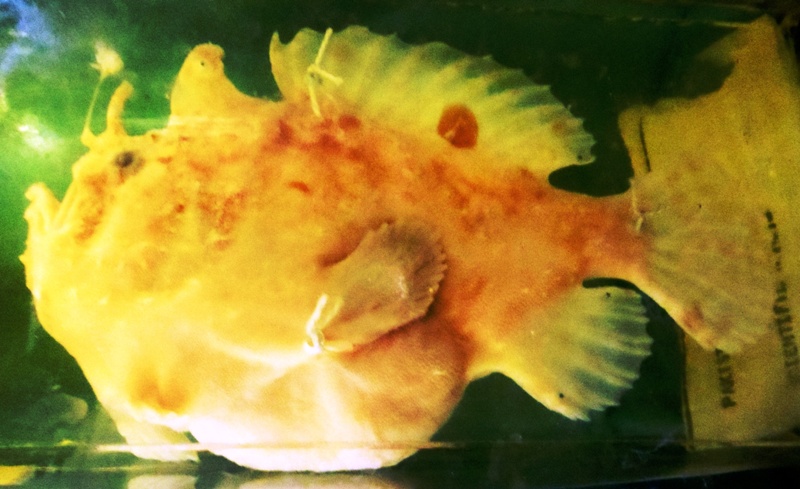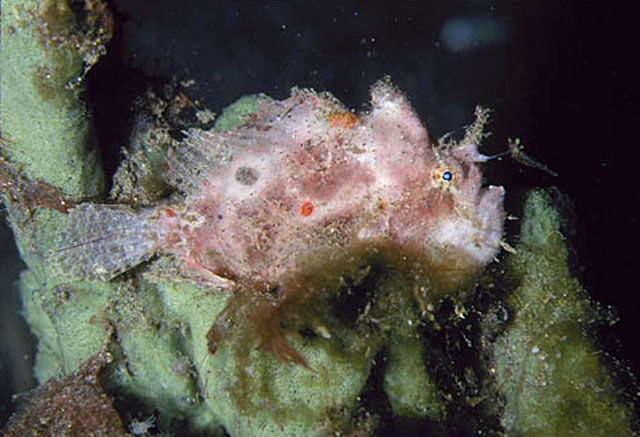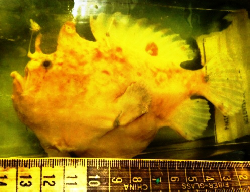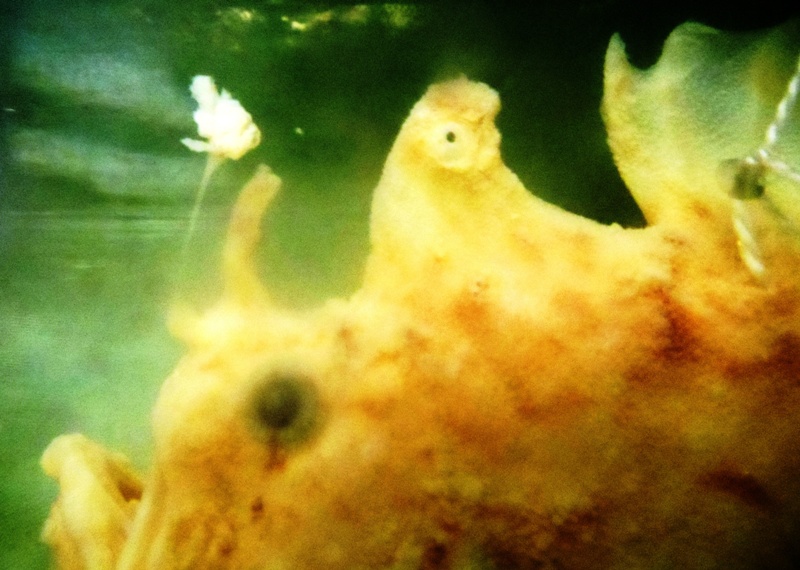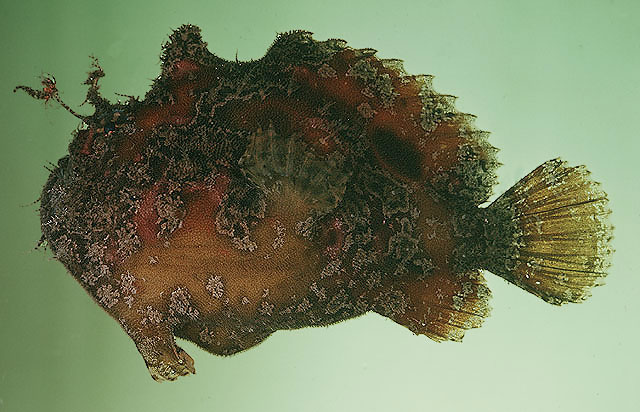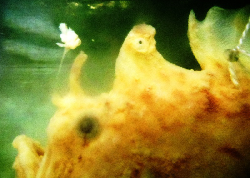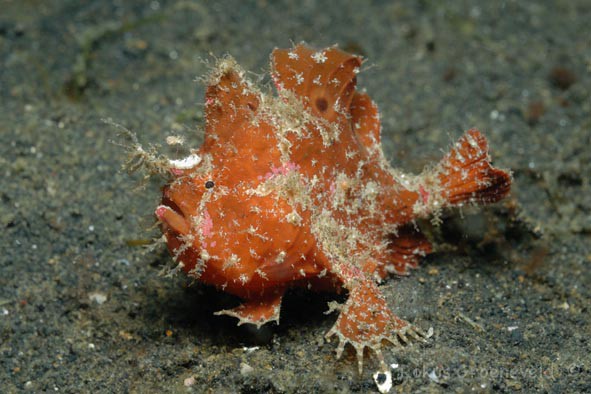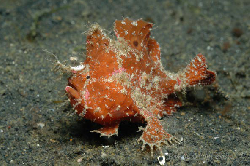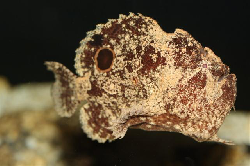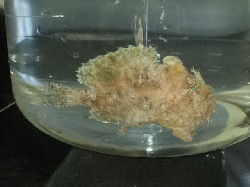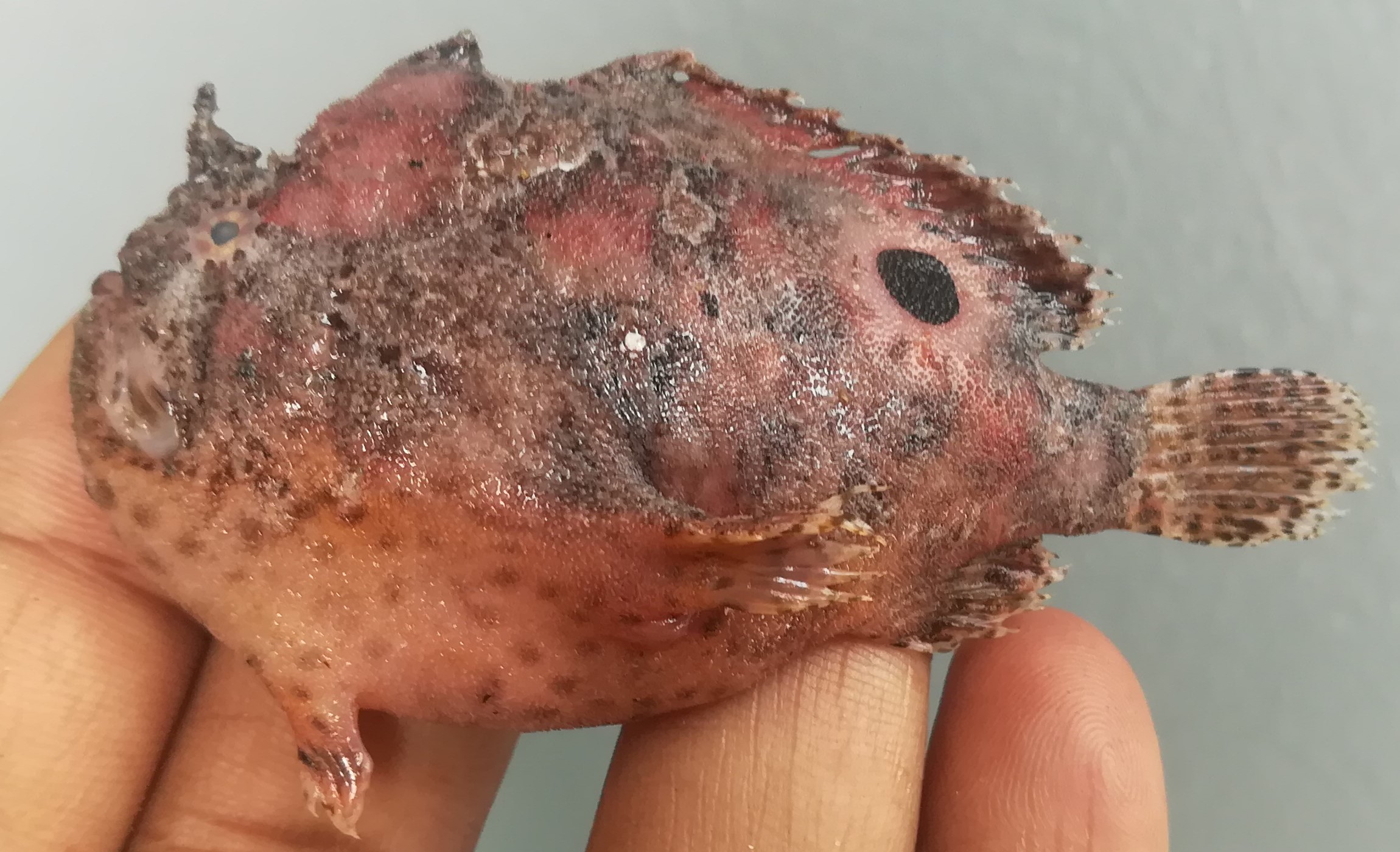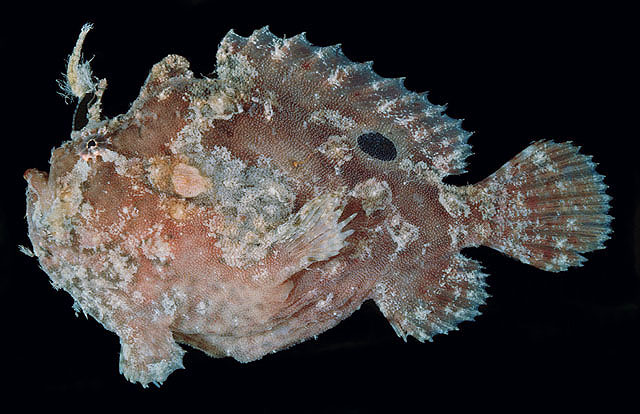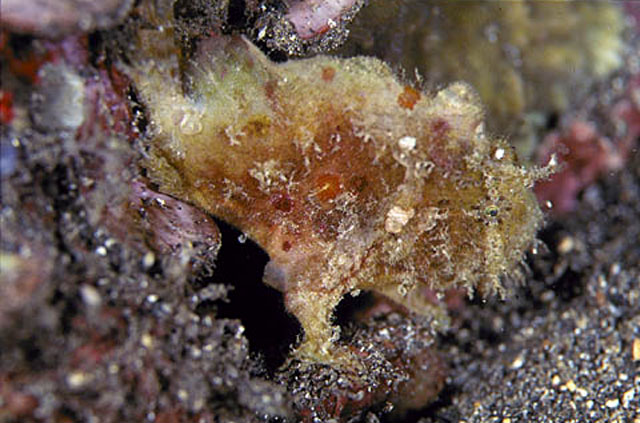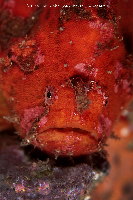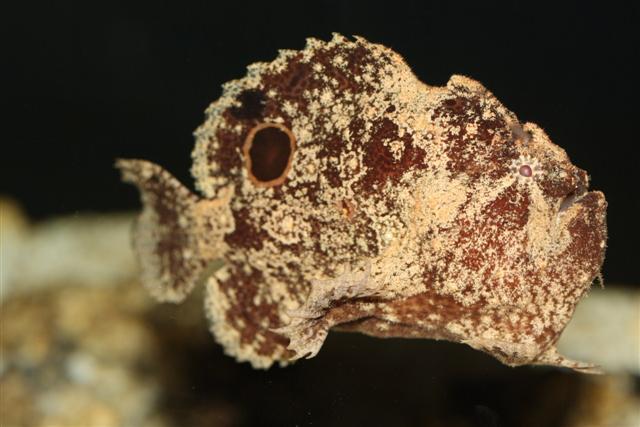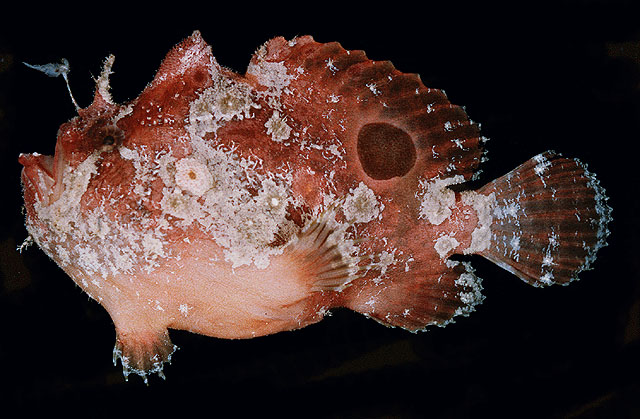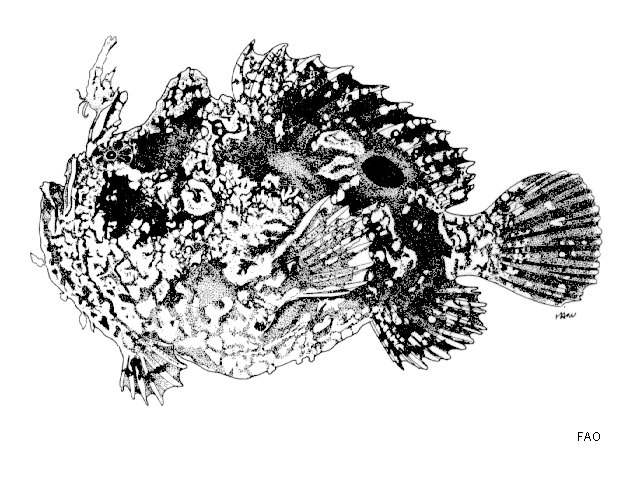Abantennarius nummifer (Cuvier, 1817)
Description
Dorsal spines (total): 3; Dorsal soft rays (total): 12 - 13; Anal spines: 0; Anal soft rays: 7 - 8. Color variable, yellow, pink, red, brown, or black. a dark spot at base of posterior dorsal rays (a black phase with tips of pectoral rays white also occurs, Ref# 1602). Illicium about equal in length with 2nd dorsal spine. Bulbous esca with filamentous tentacles (resembling a stout-bodied shrimp, Ref# 1602). Last pelvic fin ray bifurcate. Caudal peduncle present. Eyes usually with bands radiating from its pupil (Ref. 48635).
Common Names
No common names available.
Taxonomic Hierarchy
Kingdom: Animalia
Phylum: Chordata
Class: Teleostei
Order: Lophiiformes
Family: Antennariidae
Genus: Abantennarius
Species: Abantennarius nummifer (Cuvier, 1817)
Climate Zone
Location
Biology
Sedentary (Ref. 68964). Inhabit intertidal zone to depths of at least 25 m on both lagoon and seaward reefs. May be taken anywhere from the surface to approximately 176 m in the Indo-Pacific area, average depth of known captures at 19 m. Those from Eastern Atlantic at deeper waters, between 44 and 293 m, average depth of 107 m. In life, its esca resembles a tiny stout-bodied shrimp (Ref. 37816). Benthic (Ref. 58302). Oviparous. Eggs are bound in ribbon-like sheath or mass of gelatinous mucus called 'egg raft' or 'veil' (Ref. 6773). Voracious carnivore, attracting prey with front of their cavernous mouth by wriggling their baitshaped first dorsal spine (lure) (Ref. 68964).
Habitat
associated
Conservation Status
Least Concern
Threat to Humans
Harmless
